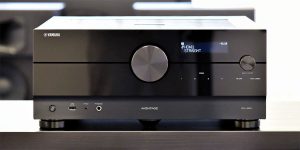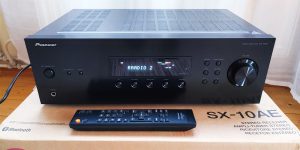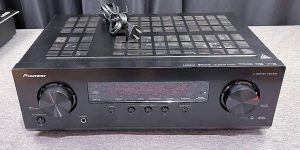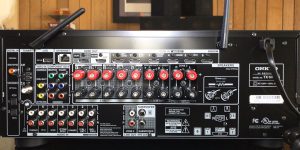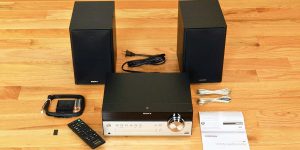Choosing a new AV receiver can be itchy and irritating, especially for those looking for the first time or who haven’t upgraded their system in a while. After all, many of them are on the market today, and each has advantages and disadvantages. So I picked the best 5 channel receivers of 2025, tested them, found pros and cons, and want to share with you.
This type of AVR is the simplest, has basic functions, and is inexpensive (refers to budget). Still, it can definitely improve the sound of your TV, give you surround sound, improve the video signal, and give you some of the charms of wireless connection, so popular today. I’m sure many of you will find this article interesting and useful. And some of you will even finally decide on the choice. Ready? Let’s go!
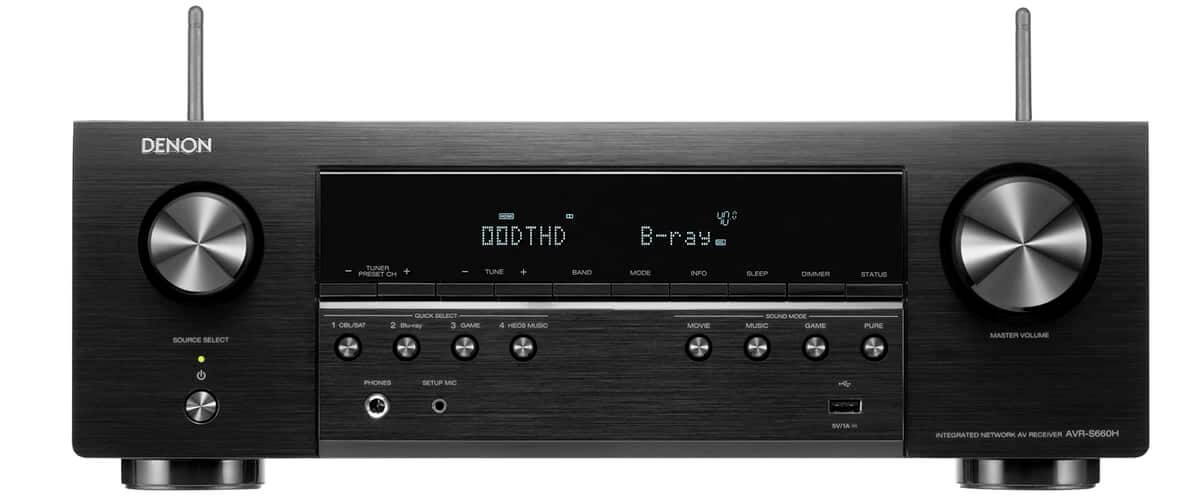
5-channels receivers comparison table
| Name | Channels | Power output | HDMI in/out | Bluetooth/Wi-Fi | Review |
|---|---|---|---|---|---|
| Denon AVR-S660H best overall | 5.2 | 75W/8 Ohm | 6/1 | yes/yes | Review |
| Yamaha RX-V4A also great | 5.2 | 80W/6 Ohm. | 4/1 | yes/yes | Review |
| Pioneer VSX-534 budget | 5.2 | 150W/8 Ohm | 4/1 | yes/no | Review |
What 5-channels receivers did we test?
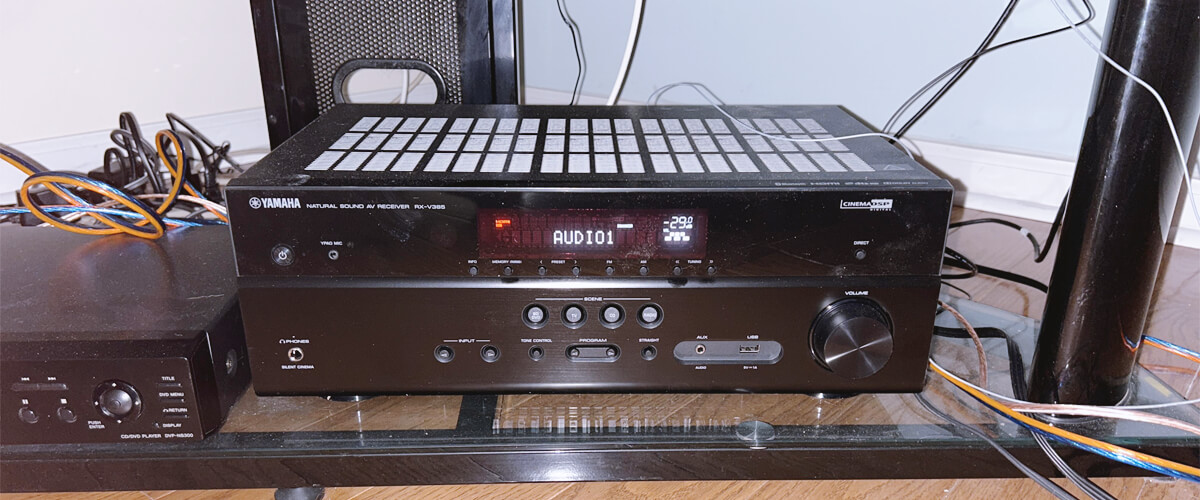
To compile a list of the best 5.1 AVRs in 2023, besides the models featured in my review, I tested the following:
- Yamaha RX-V385. This receiver was not included in my top because the review has a newer, improved model with more functionality. And that is the Yamaha RX-V4A. For the same reasons, Denon AVR-S570BT was not included because there is Denon AVR-S660H.
- Sony STR-DH590 was not included in our top for a combination of reasons, both technical and personal preferences.
Trying to be objective when forming a list of surround sound receivers, I always refer to customer reviews from various shopping sites and the opinions of other users and experts from popular audio forums. So, this rating is made based on such experience.
Our criteria for choosing the best 5.2 receiver
The following factors were the criteria for selection: the required number of amplification channels, listening experience, availability of necessary built-in functions (Bluetooth, Ethernet/Wi-Fi, AM/FM tuner), a sufficient number of inputs and outputs, price, quality of performance and design of the receiver.
Best 5.1 AV receivers review
Denon AVR-S660H – best overall

I’ll start my ranking with my favorite brand, Denon, and its 2021 model, the AVR-S660H, with 5.2 channels (two separate pre-outputs for subwoofers). Excellent for the under $500 category; the functionality allows me to give this receiver the regalia of the leader of my selection.
The receiver’s power is in the standard range for a 5-channel system at 75 watts (8 ohms, 20 Hz – 20 kHz, 0.08%, 2ch), and thanks to its low THD, the sound fills the room evenly, quite loudly, and cleanly.
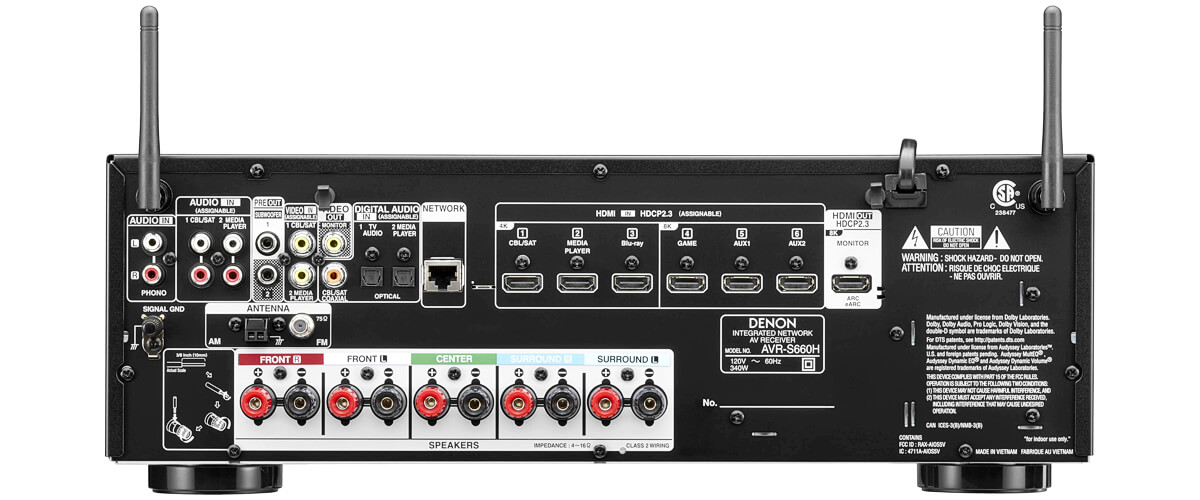
The AVR-S660H has 6 HDMI inputs, 3 of which have version 2.1. This means that 8K video is available with it. In addition, the receiver supports UHD Dolby Vision, HDR 10+, and Dynamic HDR formats. Moreover, it scales low-quality video up to 8K. Of course, you need to realize that all these “charms” will not work as well as inexpensive models. A couple of times, I had to reboot the whole system when switching the source. Also, judging by user reviews, the model is incompatible with all TVs. Nevertheless, I consider it a bonus, though not a hundred percent.
The wireless capabilities impressed me much more. Yes, they are limited compared to more expensive models, but for the category in question, wow. I tried HEOS, AirPlay 2, and streaming services, and everything worked well, cleanly and brightly, as Denon should. But the performance of the Denon app in conjunction with HEOS leaves a lot to be desired. Individually, they work fine, but they start to slow down together.
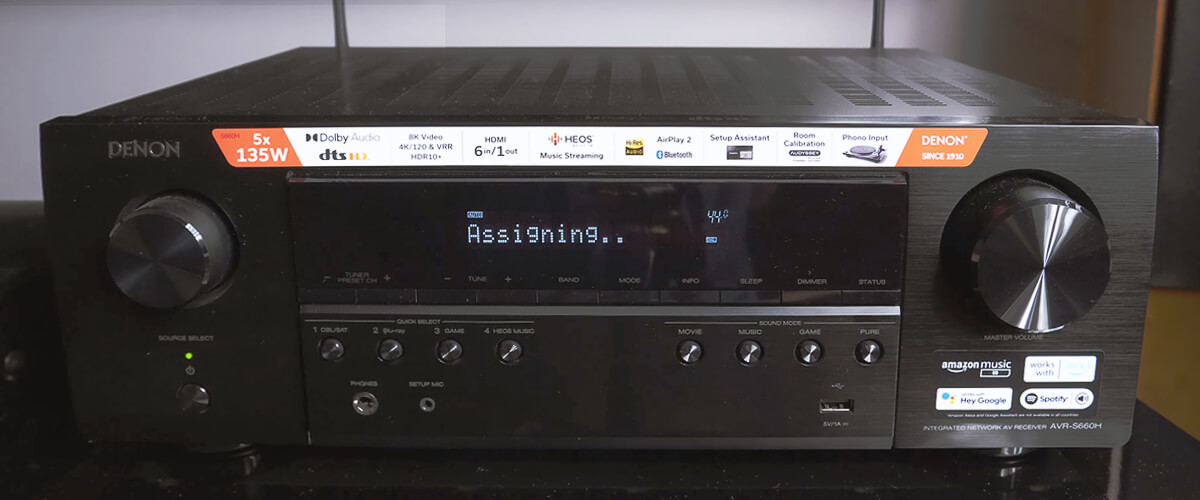
In the sound of AVR-S660H, you will find coziness, warmth, brightness, and dynamics inherent in Denon products. It supports only the basic surround sound formats Dolby TrueHD and DTS HD Master. Still, the playback quality of this receiver exceeds many competitors, including some of the models offered in this rating. The bass is quite tight and rich, and the midrange is well-separated and clear. Even the vinyl player (there is a phono-input) gave a characteristic warmth and authenticity on a level with more expensive receiver models.
Denon AVR-S660H is awarded the title of the best 5.1 receiver in my rating for its optimal combination of price, performance, and functionality, with minimal acceptable compromises. The receiver is equally good in surround sound and stereo, equipped with modern basic functions, and will serve its owner for a long time.
Key specs
- Channels: 5.2.
- Power output: 75W/8 Ohm.
- HDMI inputs/outputs: 6/1.
- Video functions: 8K/60Hz, 4K/120Hz pass-though, upscaling up to 8K.
- Bluetooth/Wi-Fi: yes/yes.
- Streaming services: AirPlay 2, Spotify, TuneIn, Deezer, Tidal, Netflix, Amazon Prime.
- Supports: HDMI ARC, HDMI eARC, HDMI CEC, HDCP2.3, HDR10+, Dolby Vision.
- Surround sound: DTS HD Master, DTS:X, DTS Virtual:X, Dolby Atmos, Dolby TrueHD.
Pros
- 3 HDMI ports with 8K support and upscaling – more than other models of the budget category.
- The receiver showed good performance in the wireless area.
- Optimal combination of price/quality from the whole rating.
- Equally good in surround sound and stereo.
Cons
- Video features are extensive, but their performance is questionable in places.
- The Denon app, in combination with HEOS, is rather slow.
Yamaha RX-V4A – also great
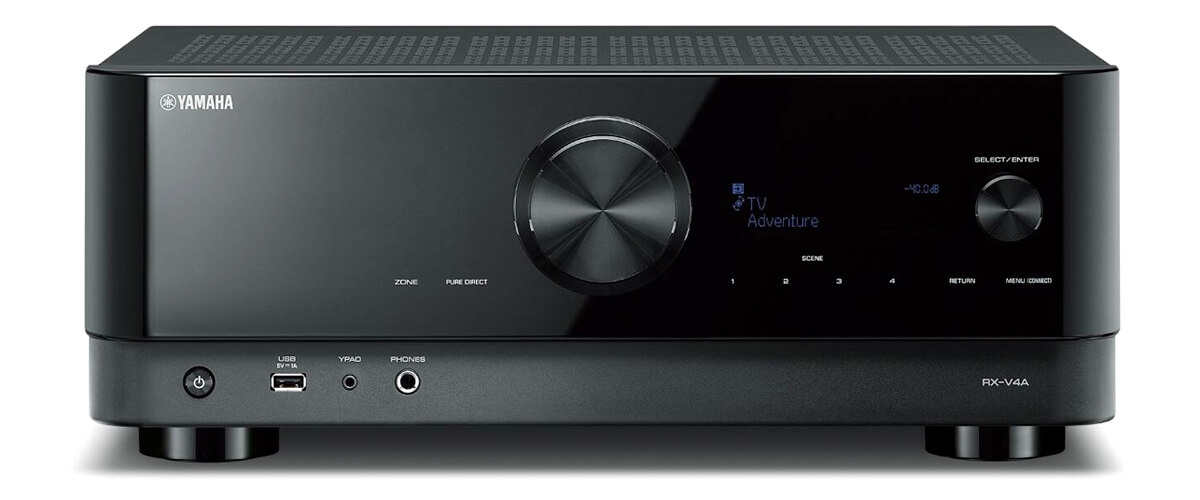
It didn’t take long to choose the second place in my ranking, as the Yamaha RX-V4A resembles the Denon AVR-S660H in many ways but is slightly more expensive. The model was released in 2020, has two independent sub-outputs, and offers a bit more power at 80 watts (6 ohms, 20Hz-20kHz, 0.09%, 2ch). Given the specific cold (users use the term “neutral”) sound and THD rating, this receiver can be considered by owners of rooms up to 400 square feet. It fills the space easily without getting lost or diffused in the room’s corners.
The Yamaha RX-V4A is beautiful and has rounded corners and touch controls, so you don’t have to worry about the buttons clogging with dust over time. At the same time, the LCD embedded under the glossy surface is quite hard to see, and many users complain about that.
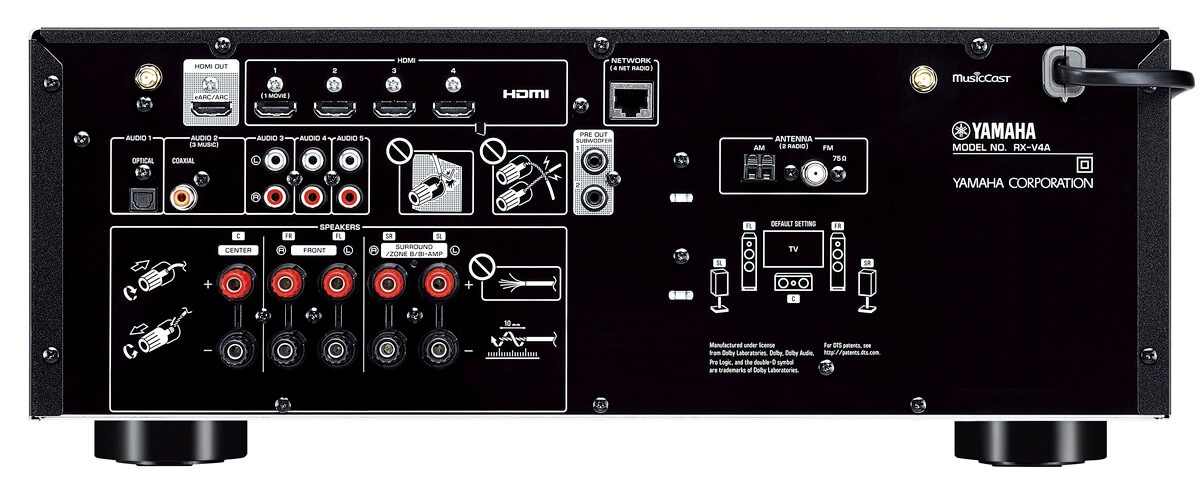
I realize that for a budget model, you shouldn’t expect a lot of connections, but the RX-V4A is quite limited in that. Only one coaxial input and no phono preamp. There are only 4 HDMI ports. But with them, at least 8K video is available (HDCP 2.3 and eARC). Although not without some drawbacks. For example, I noticed a slight picture freeze when viewing content from some platforms.
Still, music lovers note the extensive wireless capabilities of this model. I partially agree with them. You can use Wi-Fi, AirPlay 2, MusicCast, and built-in streaming services to broadcast digital formats. Unlike the AVR-S660H, you can also use voice control (Google Assistant and Amazon Alexa).
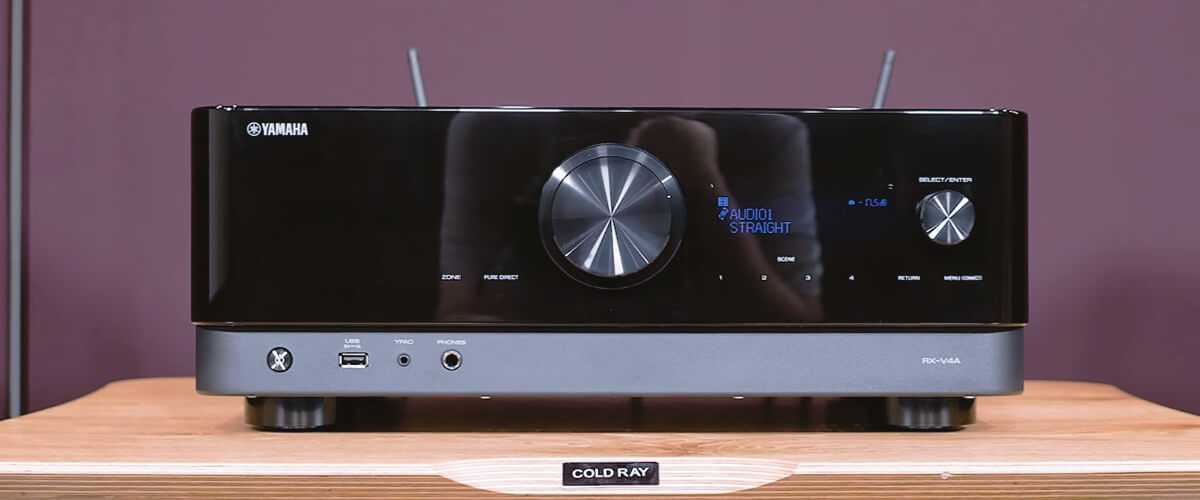
In surround sound, the Yamaha RX-V4A performed very well. It supports the standard Dolby TrueHD and DTS HD Master surround sound formats for 5-channel systems. But the unique CINEMA DSP 3D technology adds some “echo” effect to them, like in concert halls, and it sounds a bit more colorful than other receivers of this rank. And you can also adjust each speaker separately! Since the calibration system is rather primitive, such an additional adjustment element is not excessive.
Yamaha RX-V4A is an excellent 5.1 amplifier with a beautiful design and simple operation. It is equipped with technologies that can improve the sound of movies and music, and its shortcomings are quite acceptable for its price. You’ll have great evenings in its company because you don’t have to leave your chair – control it with your voice!
Key specs
- Channels: 5.2.
- Power output: 80W/6 Ohm.
- HDMI inputs/outputs: 4/1.
- Video functions: 8K/60Hz, 4K/120Hz pass-though, upscaling up to 4K.
- Bluetooth/Wi-Fi: yes/yes.
- Streaming services: AirPlay 2, Spotify, TuneIn, Deezer, Tidal, Netflix, Amazon Prime.
- Supports: HDMI ARC, HDMI eARC, HDMI CEC, HDCP2.3, HDR10+, Dolby Vision.
- Surround sound: DTS HD Master, Dolby Atmos, Dolby TrueHD, Dolby Digital Plus.
Pros
- It may be suitable for slightly larger rooms than other receivers in the rating.
- Compatible with voice assistants, unlike the AVR-S660H.
- With CINEMA DSP 3D, surround formats sound more colorful than other rated models.
- The volume of each speaker can be adjusted individually.
Cons
- Not all users will like the LCD.
- A slight video freeze was noticed when viewing content from some platforms.
- There are too few connections for the highest price on the list.
Pioneer VSX-534 – budget
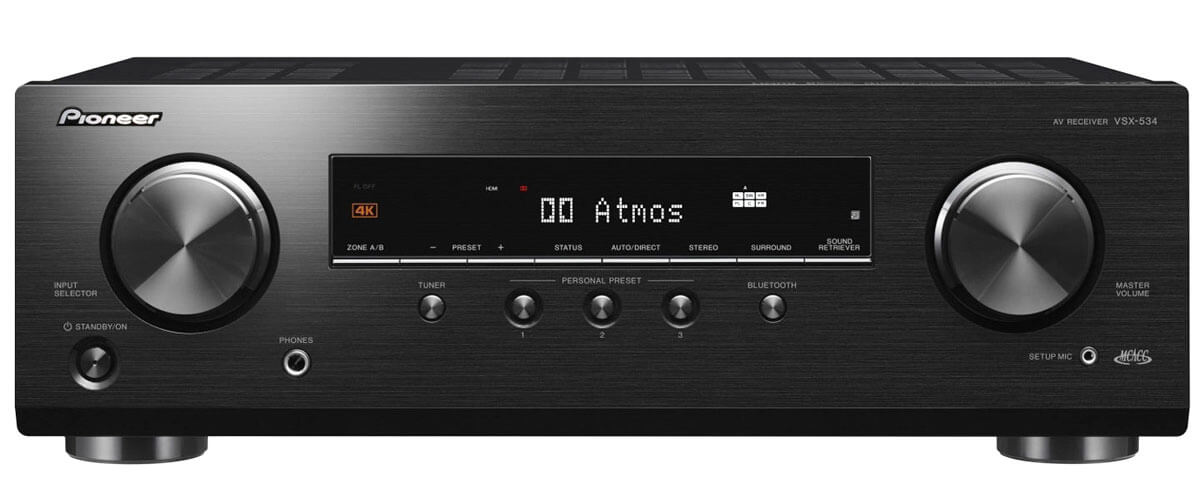
The cheapest but surprisingly functional Pioneer VSX-534 takes the third place in the rating. Whether it is as good in practice as its specifications say, I will tell you right now.
I’ll start, as usual, with the power figures. You can get 80W per channel at 8 ohm (20Hz-20kHz), but THD is 0.8%, much higher than the previous two models described. And it means that VSX-534 doesn’t sound as powerful and clean as they do. Well, here comes the first compromise.
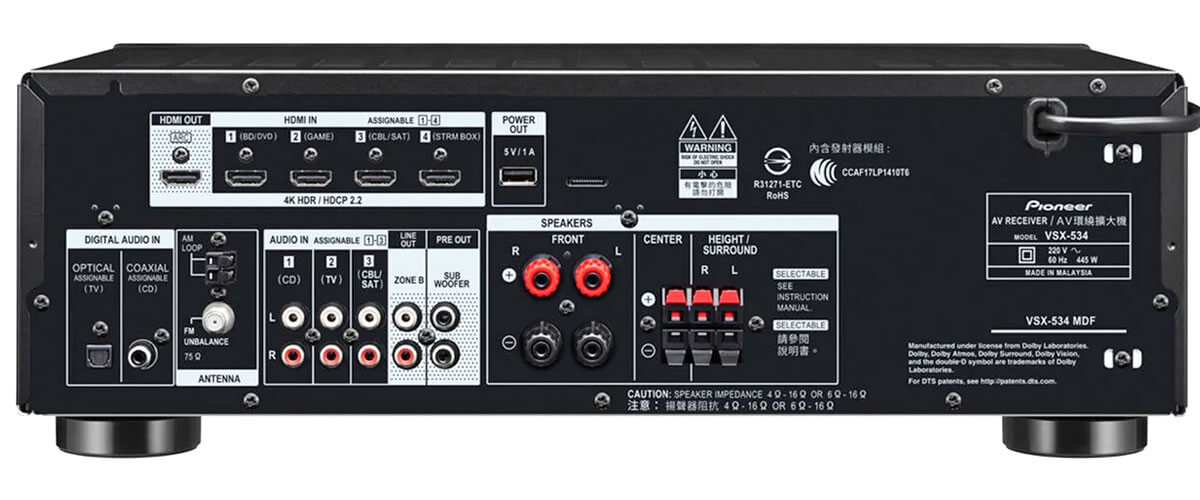
The second loss against the Denon AVR-S660H and Yamaha RX-V4A is a video with only 4K resolution. The model was released in 2019 and is not equipped with HDMI 2.1, but it does have HDCP 2.3. But 1 output only supports ARC. Nevertheless, video in HDR10, HLG, and Dolby Vision formats are available to him. There are few other connectors, but you can connect 2 subwoofers.
Pioneer has removed the wireless connectivity features as well, including Wi-Fi. There are none of them, none at all. But Bluetooth 4.2, with support for SBC and AAC codecs, can compensate for the failure in streaming audio. This type of connection has high-quality signal transmission.
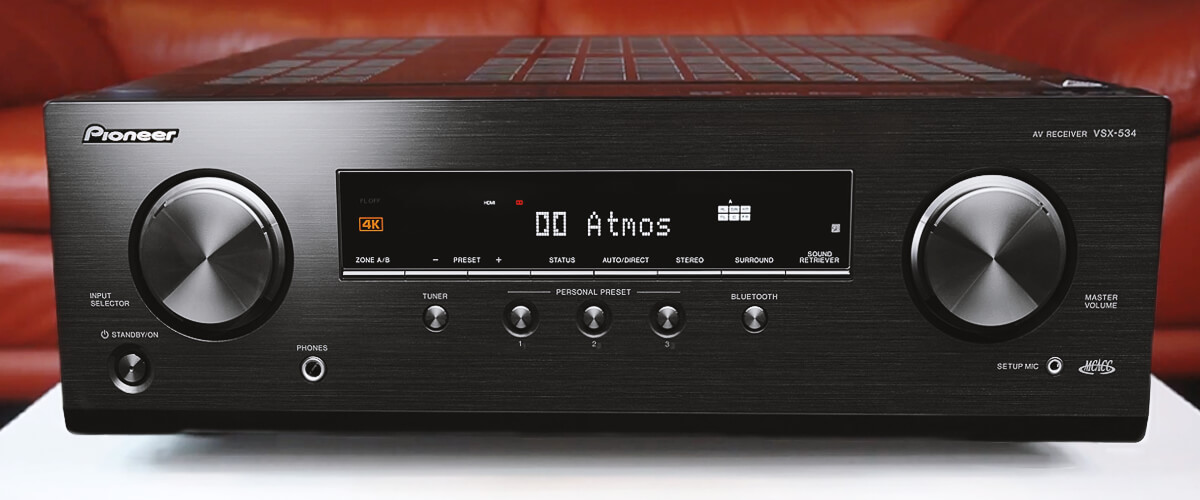
MCACC autocalibration is considered to be the most primitive, but still, you can save your settings (3 types) with the Personal Preset function. You can customize the system for different video options and never return to this issue again. Pretty cool, huh?
The Pioneer VSX-534 is the only AVR to decode Dolby Atmos or DTS:X surround sound formats. Sure, the 3.1.2 configuration won’t give you the full experience, but it’s still a unique experience for a 5-channel unit. On the other hand, Dolby Atmos Height Virtualization and DTS Virtual:X are more real immersive formats for such a system. Moreover, you have audio/video status information on your screen, so you’ll always know what format the audio and video are output in (Dolby Vision/Dolby Atmos or DTS:X). You can also listen to audio in the second zone with wireless headphones. The surround sound is remarkable. That’s what Pioneer focused on, and did the right thing by all appearances.
Pioneer VSX-534 is the best budget 5.1 AV receiver among the budget ones. It’s limited in wireless connectivity and video capabilities but offers better surround sound capabilities and doesn’t mess around with Bluetooth wireless streaming. This is a great device for its price.
Key specs
- Channels: 5.2.
- Power output: 150W/8 Ohm.
- HDMI inputs/outputs: 4/1.
- Video functions: 4K/60Hz, 4K/120Hz, upscaling up to 4K.
- Bluetooth/Wi-Fi: yes/no.
- Streaming services: has not.
- Supports: HDMI ARC, HDMI CEC, HDCP2.3, HDR10, Dolby Vision.
- Surround sound: DTS HD Master, DTS:X, DTS Neural:X, DTS Virtual:X, Dolby TrueHD, Dolby Digital Plus, Dolby Atmos Height Virtualization, Dolby Atmos.
Pros
- Bluetooth 4.2 provides high-quality signal transmission.
- The Personal Preset feature saves three calibration options.
- The receiver supports immersive Dolby Atmos and DTS:X formats.
- The screen displays audio/video status information.
- With wireless headphones, you can listen to sound in a different zone.
Cons
- THD is higher than other models, and the receiver does not sound as clear at high volume.
- Broadcasts only 4K video, unlike the Denon AVR-S660H and Yamaha RX-V4A.
- No Wi-Fi.
Marantz NR1510
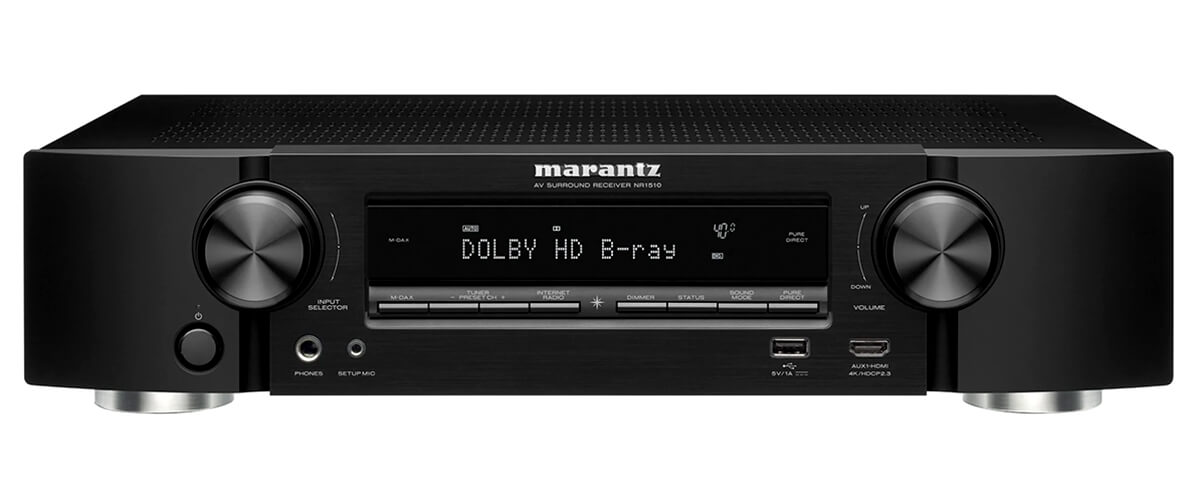
This receiver can be compared with all three described above. And let’s start with the fact that it is the most expensive (or rather, it costs as much as Yamaha RX-V4A), but it is also the least powerful (only 50 W (8 ohms, 20 Hz – 20 kHz, 0.08% 2ch Drive)). Well, this is Marantz – elite, reliable, durable, sounding great, but expensive, not because of functionality. Although, perhaps, power is almost its only drawback. Let’s take a closer look at it.
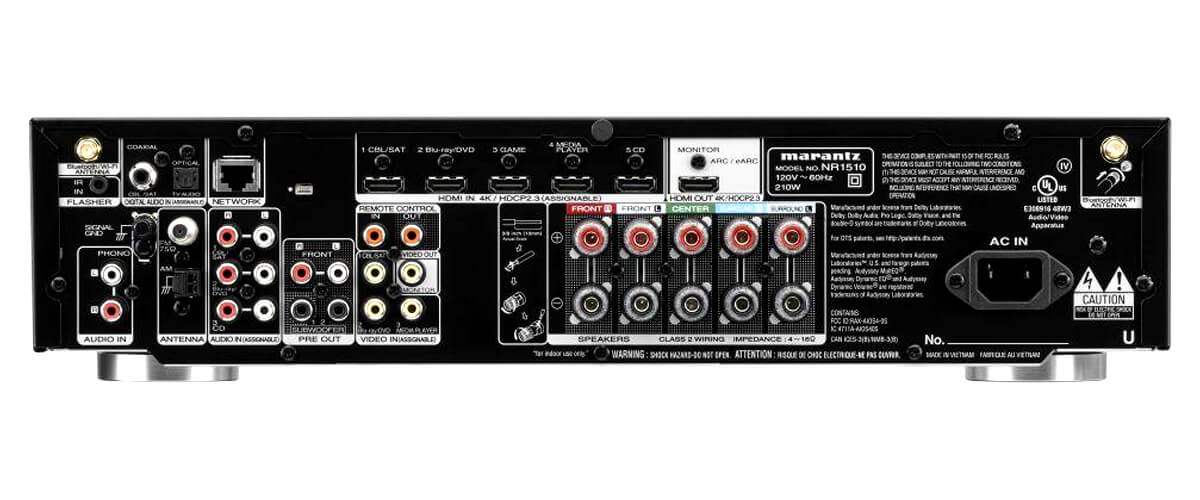
The Marantz NR1510 was released in 2019 and has a similar number of HDMI ports (6/1) to the Denon AVR-S660H. But like the Yamaha RX-V4A, it provides 4K resolution video in HDR and Dolby Vision (not 8K and without upscaling), though otherwise, the functionality is high (HDCP2.3, eARC, 3D Pass-Through). Other connections are also, as in other models of my top few, but there is a phono-input and as many as 3/1 composite connectors (for old equipment). And even the inexpensive Marantz sounds unique with vinyl: vintage and warm.
Wireless connectivity is limited to Bluetooth for headphones (which I didn’t particularly like, apparently because it doesn’t support high-end codecs), built-in Wi-Fi (also AirPlay 2), and HEOS multiroom audio. It also works with streaming services and voice assistants (identical to the Yamaha RX-V4A).
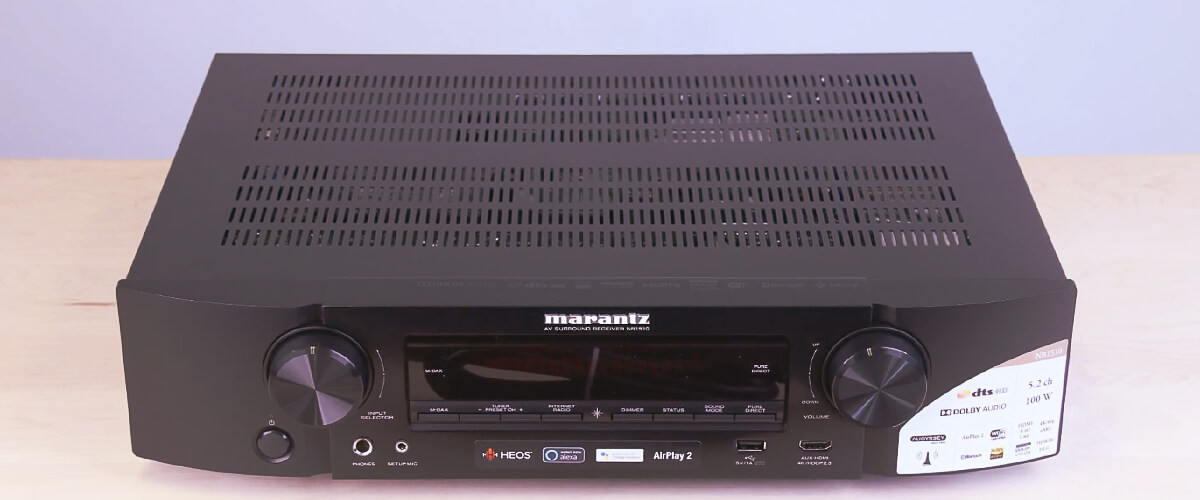
With the NR1510, you only get one surround sound format, DTS HD Master. But I can understand the manufacturer because, among acquaintances, DTS is valued above Dolby. After all, it encodes more soundtracks, which makes the overall scene richer, brighter, and more diverse (more details and separation into layers). The receiver also produces clearer dialog than the other AVRs on my list. This is quite rare for budget models. So is the Audyssey Dynamic EQ calibration system, which did a better job than the others. I didn’t have to tweak the settings manually, and they are quite satisfactory for the average listener. The M-DAX function also greatly affects the stereo sound, which improves low-quality audio to a higher quality.
Marantz NR1510 is not the most powerful receiver in my rating, but this is justified by its low-profile design and compensated by its high-quality sound, simple adaptive tuning, and functionality, which allows me to call it the best 5.2 receiver. It’s a solid, high-end AVR that stands out even among the budget.
Key specs
- Channels: 5.2.
- Power output: 85W/8 Ohm, 100W/6 Ohm.
- HDMI inputs/outputs: 6/1.
- Video functions: 4K/60Hz pass-through.
- Bluetooth/Wi-Fi: yes/yes.
- Streaming services: AirPlay2, TuneIn, Spotify, Pandora, SiriusXM, Amazon Music HD, TIDAL, Deezer, iHeart Radio, Napster, SoundCloud, Mood Mix.
- Supports: HDMI ARC, HDMI eARC, HDMI CEC, HDCP2.2, HLG, Dolby Vision.
- Surround sound: DTS HD Master, Dolby TrueHD, Dolby TrueHD, Dolby ProLogic II.
Pros
- Vinyl with the receiver sounds vintage and warm.
- Plenty of HDMI ports (for its rank), but not version 2.1.
- More connectors than other models.
- Highlighted dialog when watching movies.
- Sounds great in 3D formats, in stereo, and with vinyl.
Cons
- Lowest wattage at the highest price compared to other rated models (50 watts).
- The older version of Bluetooth does not provide high-quality headphone streaming.
- Supports only one surround sound format, DTS HD Master.
Onkyo TX-SR393
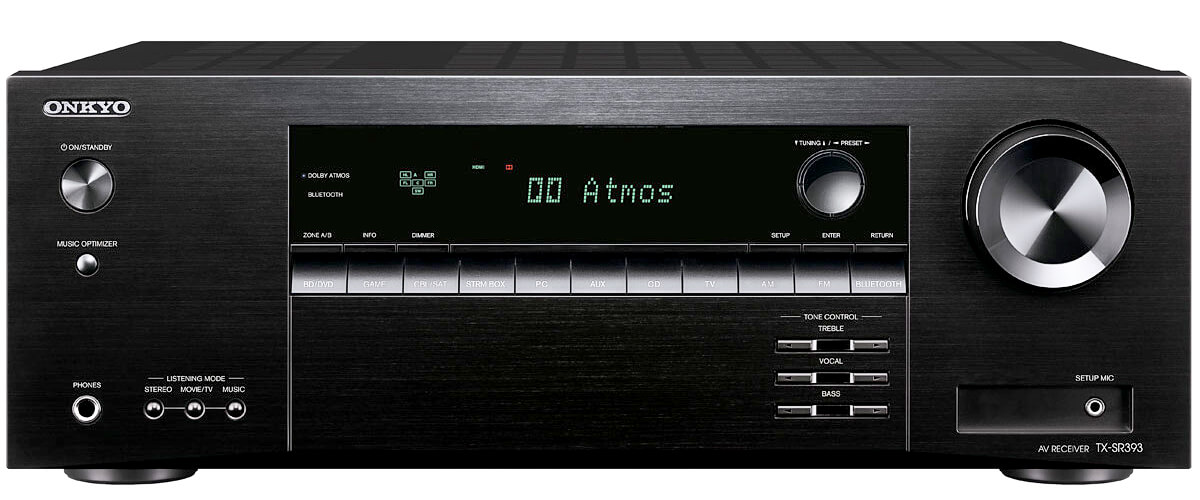
The Onkyo TX-SR393 was released in 2019 and has the same price as the Pioneer VSX-534, so it would be logical to compare it to that model. Especially since we have the same 80 watts per channel at 8 Ohm but with a better THD of 0.08%, two subs, and the ability to decode Dolby Atmos and DTS:X (and their virtual versions). The receiver also supports content with Dolby Surround and DTS Neural:X sound, which find overhead signals in older soundtracks and do an upmix, thus making the picture more realistic. Impressive?
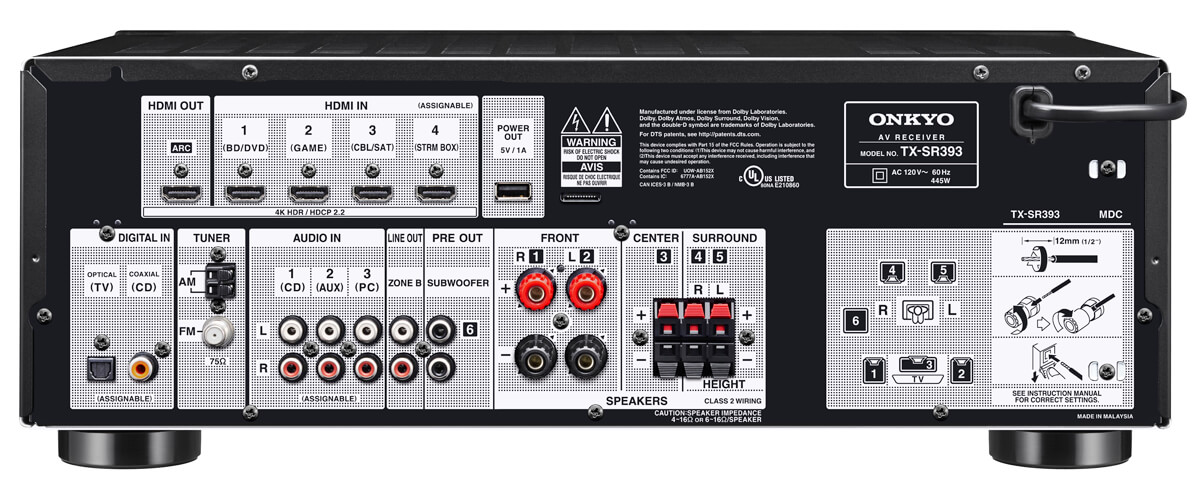
We also have a similar number and capabilities of HDMI ports (4/1 with HDCP 2.3, 3D, ARC), but 4K video is only available at 60Hz frame rate (which is lower than the Pioneer) in HDR10, HLG and Dolby Vision formats.
But unlike the Pioneer VSX-534, the TX-SR393 has built-in Wi-Fi and is compatible with Spotify, Deezer, and Tidal. Its DACs handle 384K/32 Bit Hi-Res audio formats. Bluetooth is there, too, but unlike the Pioneer, it’s a regular old version. This model also has certified performance at 4 ohms load.
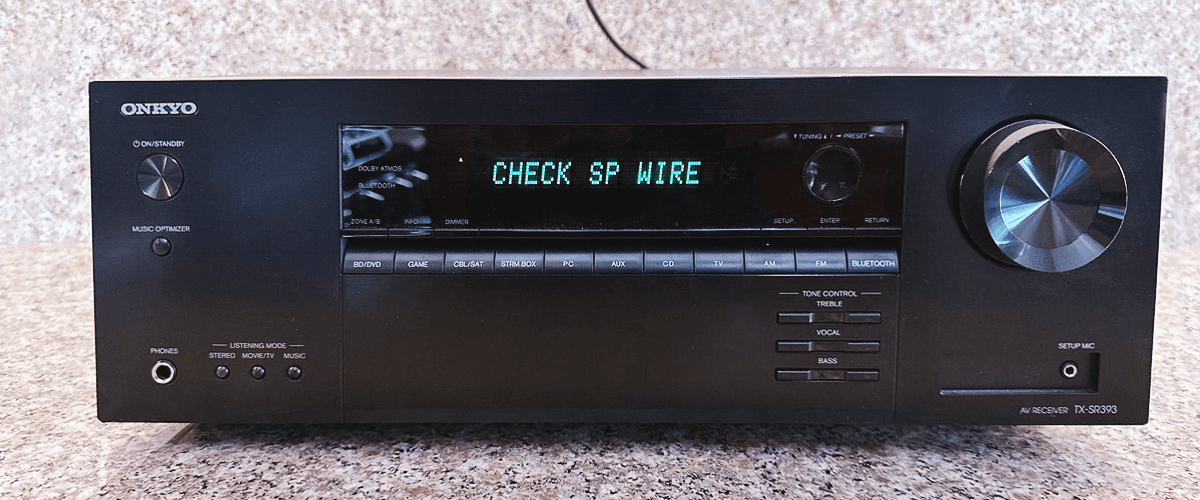
I really liked the sound of the TX-SR393. Not outstanding, but stable and quite rich. Good bass frequencies clear top. And digital music, in general, impressed for this level of budget. Apparently, the manufacturer focused on this area, for which we are grateful.
Onkyo TX-SR393 is a good 5.1 home theater receiver. It’s a workhorse in its category at a very low price. If the pros mentioned above are enough for you and you are not confused by the cons of this device, you will make a good choice by purchasing it for your home needs.
Key specs
- Channels: 5.2
- Power output: 80W/8 Ohm.
- HDMI inputs/outputs: 4/1.
- Video functions: 4K/60Hz pass-through.
- Bluetooth/Wi-Fi: yes/no.
- Streaming services: has not.
- Suppots: HDMI ARC, HDMI CEC, HDCP2.3, HDR10, Dolby Vision.
- Surround sound: DTS HD Master.
Pros
- As well as the Pioneer VSX-534 de-iodizes Dolby Atmos and DTS:X.
- The receiver’s DACs handle 384K/32 Bit Hi-Res audio formats.
- The Onkyo TX-SR393 has certified performance into a 4Ohm load.
Cons
- Video is streamed in 4K/60 Hz resolution, lower than other receivers in the selection.
What to look for when choosing a 5.1 receivers
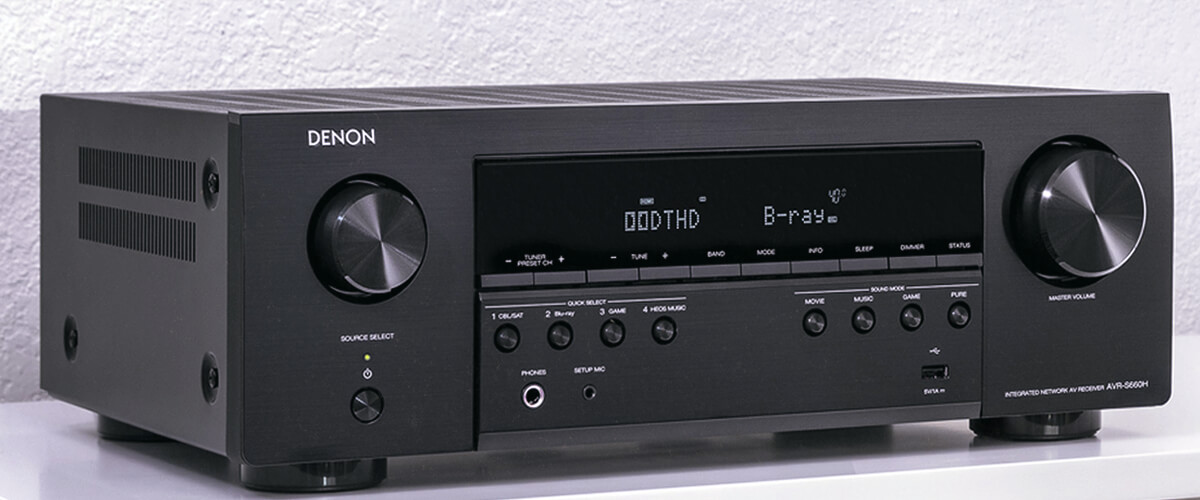
Required connections
Since 5-channel receivers are entry-level budget devices, you won’t find a lot of connectors in them. This is one of the compromises that await you when saving money. Nevertheless, this is an important criterion when choosing, so you should pay attention to the availability:
- The more HDMI ports, the better. But more important is their version. In more modern models, look for HDMI 2.1 because with it, you can get the opportunity to view content with a resolution of 8K (but for this, you need the appropriate TV). Also, such ports have eARC, HDCP 2.3, and CEC functions, which significantly increase the level of signal transmission. Thus, even a budget device will not need to be upgraded for long.
- Subwoofer pre-outs and phono input. These connectors can complement and improve the sound picture for those who love music, especially vinyl. At the same time, save space by not having to buy a phono preamplifier separately (although it is always better than a built-in one).
- Optical, component, and coaxial inputs are needed for outdated equipment. But why buy a new one if the old one copes with the task perfectly? Usually, budget receivers have few or no such connectors.
Built-in Wi-Fi and Bluetooth
5 channel receivers often don’t even have Wi-Fi or Bluetooth (but there’s always one thing). So, if you are a user of streaming services, I would pay attention to the presence of such things as built-in ecosystems (HEOS, MusicCast), the ability to work with Sonos (usually you need to buy a special port), compatibility with streaming services (built-in in budget receivers – a rarity) and voice assistants. And also on Wi-Fi and Bluetooth versions. For the former, there may be options for DTS Play-Fi, AirPlay, or Chromecast, and for the latter – support for aptX, SBC, or AAC codecs. This can significantly affect the accuracy of the signal transmission, as outdated versions often sag or transmit with interference.
Take some time and familiarize yourself with the intricacies and differences of the many wireless connectivity options, and you’re sure to find the optimal one for you.
Receiver power: does it matter?
5-channel AVRs are characterized by 50-80W per channel. This standard is sufficient for the kind of rooms these systems are designed for, namely 150-300 square foot rooms. The sound will be evenly distributed, and you will hear everything you need to hear.
A more important parameter in the area of power is THD. If it is high (more than 1%), you won’t be able to use the volume at full volume because you will hear interference. So, look for receivers with as low THD as possible. A 50W/0.08% AVR can sound cleaner and louder than an 80W/0.8% AVR.
4K, 8K, HDR support
All modern receivers support 4K video resolution, but among the budget ones, you can find some that allow you to enjoy video in 8K/60Hz resolution. You will need an HDMI 2.1 port, a quality cable, and a TV with 8K support. Among the high contrast formats are Dolby Vision, HDR, HDR10 and HDR10+. Any of these will make the picture on the screen look great, so it’s important to check the specifications of your receiver before you buy.
We are supported by our audience. When you purchase through links on our site, we may earn an affiliate commission at no extra cost to you.
Our newsletter
* We will never send you spam or share your email with third parties

![Best Budget Receivers [Reviewed and Tested]](https://thetechholics.com/wp-content/uploads/2023/10/best-budget-av-receiver-300x150.jpg)
![Best 9-Channels AV Receivers [Reviewed and Tested]](https://thetechholics.com/wp-content/uploads/2023/10/best-9-2-receiver-300x150.jpg)

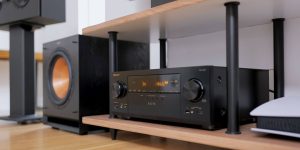
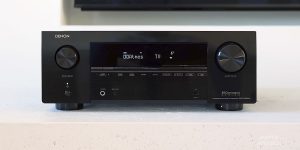
![Pioneer vs Denon Receivers [Top Models Compared and Tested]](https://thetechholics.com/wp-content/uploads/2023/10/denon-vs-pioneer-review-300x150.jpg)
